Answered step by step
Verified Expert Solution
Question
1 Approved Answer
Provide modulo-n counter Verilog for two pushbuttons, 4-digit 7 segment display. sdc file // Use this file as your 'lab3' project top level module //
Provide modulo-n counter Verilog for two pushbuttons, 4-digit 7 segment display.
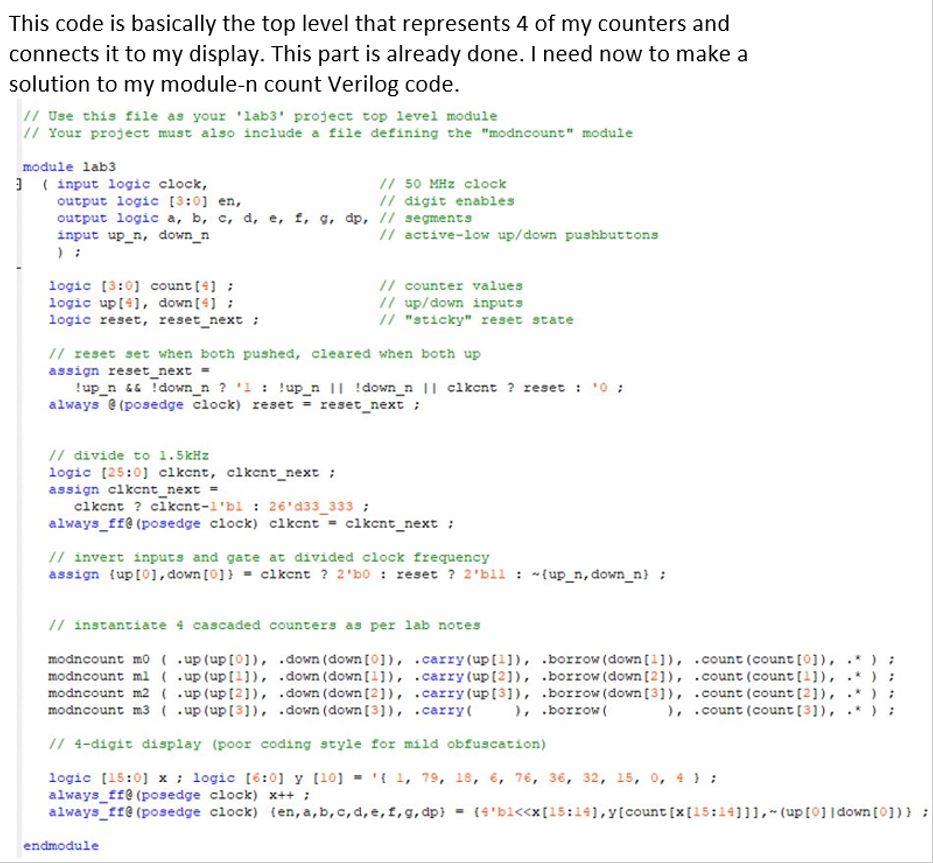
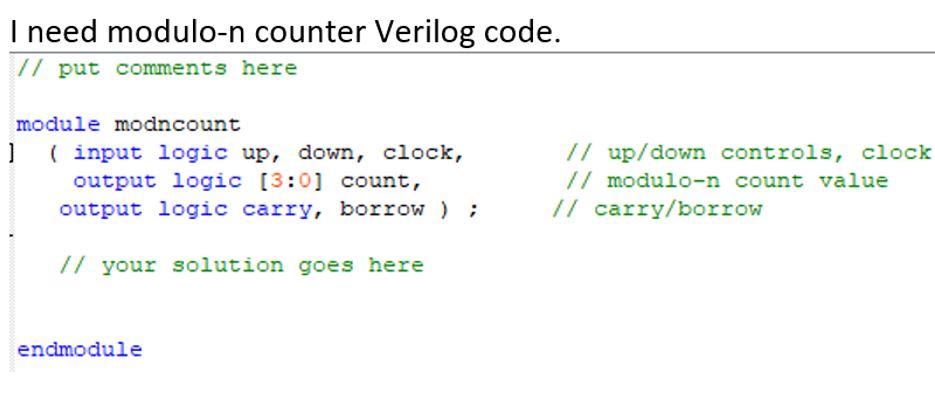
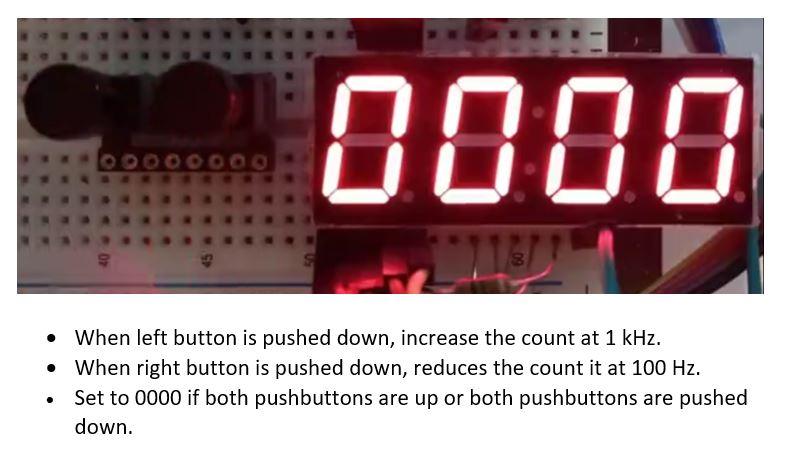
sdc file
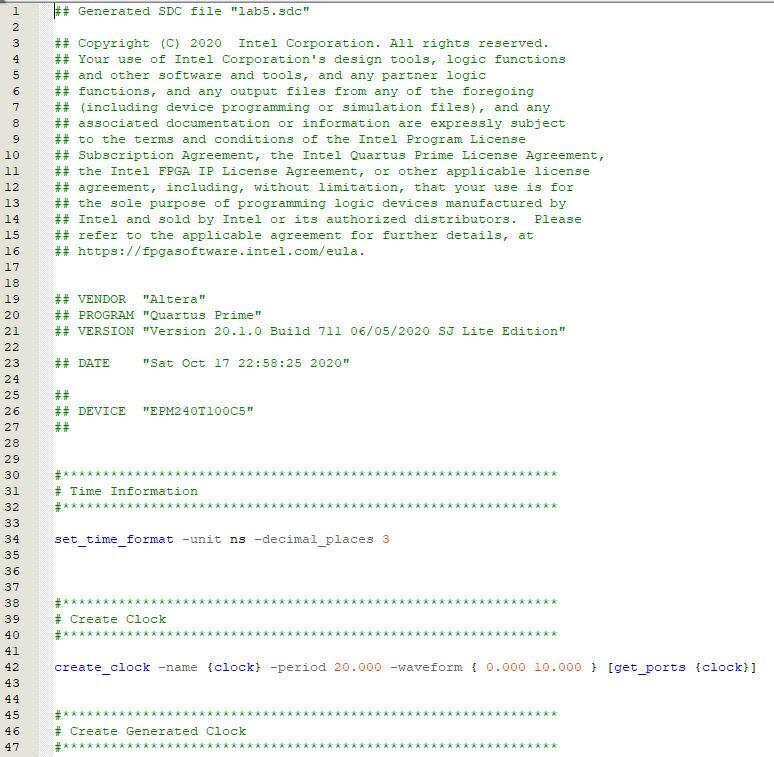
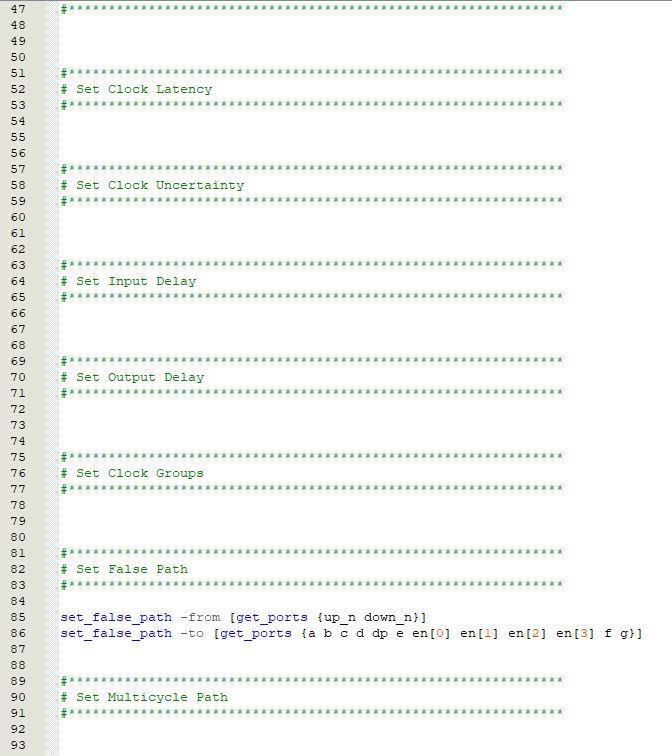

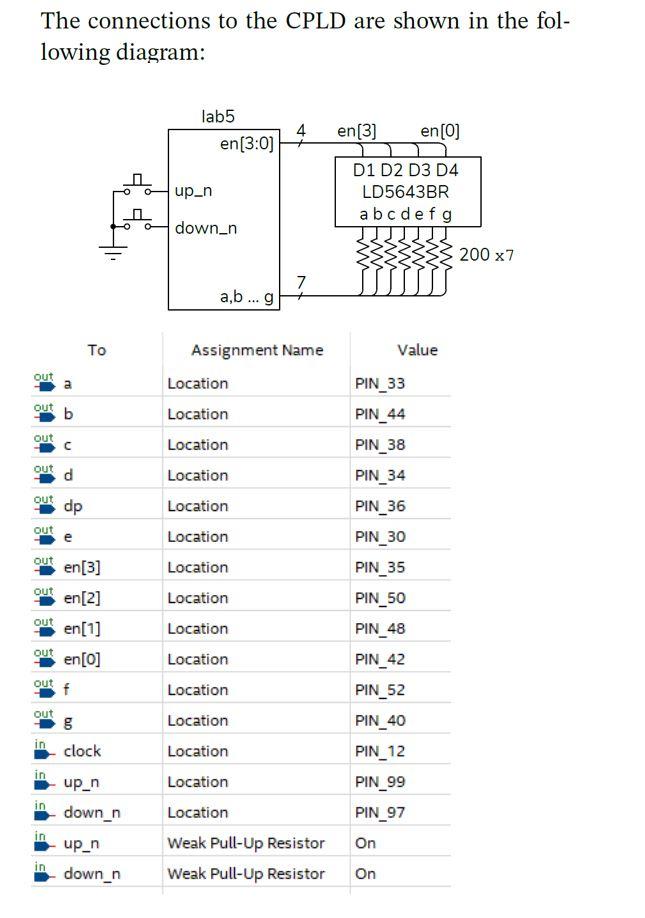
// Use this file as your 'lab3' project top level module // Your project must also include a file defining the "modncount" module
module lab3 ( input logic clock, // 50 MHz clock output logic [3:0] en, // digit enables output logic a, b, c, d, e, f, g, dp, // segments input up_n, down_n // active-low up/down pushbuttons ) ; logic [3:0] count[4] ; // counter values logic up[4], down[4] ; // up/down inputs logic reset, reset_next ; // "sticky" reset state
// reset set when both pushed, cleared when both up assign reset_next = !up_n && !down_n ? '1 : !up_n || !down_n || clkcnt ? reset : '0 ; always @(posedge clock) reset = reset_next ; // divide to 1.5kHz logic [25:0] clkcnt, clkcnt_next ; assign clkcnt_next = clkcnt ? clkcnt-1'b1 : 26'd33_333 ; always_ff@(posedge clock) clkcnt = clkcnt_next ; // invert inputs and gate at divided clock frequency assign {up[0],down[0]} = clkcnt ? 2'b0 : reset ? 2'b11 : ~{up_n,down_n} ; // instantiate 4 cascaded counters as per lab notes
modncount m0 ( .up(up[0]), .down(down[0]), .carry(up[1]), .borrow(down[1]), .count(count[0]), .* ) ; modncount m1 ( .up(up[1]), .down(down[1]), .carry(up[2]), .borrow(down[2]), .count(count[1]), .* ) ; modncount m2 ( .up(up[2]), .down(down[2]), .carry(up[3]), .borrow(down[3]), .count(count[2]), .* ) ; modncount m3 ( .up(up[3]), .down(down[3]), .carry( ), .borrow( ), .count(count[3]), .* ) ; // 4-digit display (poor coding style for mild obfuscation) logic [15:0] x ; logic [6:0] y [10] = '{ 1, 79, 18, 6, 76, 36, 32, 15, 0, 4 } ; always_ff@(posedge clock) x++ ; always_ff@(posedge clock) {en,a,b,c,d,e,f,g,dp} = {4'b1 endmodule
// put comments here
module modncount ( input logic up, down, clock, // up/down controls, clock output logic [3:0] count, // modulo-9 count value output logic carry, borrow ) ; // carry/borrow
// your solution goes here
endmodule
This code is basically the top level that represents 4 of my counters and connects it to my display. This part is already done. I need now to make a solution to my module-n count Verilog code. // Use this file as your 'lab3' project top level module // Your project must also include a file defining the "modncount" module module lab3 3 ( input logic clock, // 50 MHz clock output logic (3:0) en, // digit enables output logic a, b, c, d, e, f, g, dp, // segments input up_1, down_n // active-low up/down pushbuttons logic (3:0) count(); 1/ counter values logic up[4], down(); // up/down inputs logic reset, reset_next; // "sticky" reset state // reset set when both pushed, cleared when both up assign reset_next = !up_n && !down_n?'! : !up_n || !down_n || clkent ? reset :: always @ (posedge clock) reset = reset_next; // divide to 1.5kHz logic (25:0) clkent, clkont_next; assign clkent_next = clkent ? clkent-l'hi : 26'333333; always_ff@ (posedge clock) clkent = clkent_next : // invert inputs and gate at divided clock frequency assign {up[0], down[0]) = clkent ? 2'50 : reset ? 2'bil : ~{up_n, down_n) ; . // instantiate 4 cascaded counters as per lab notes modncount mo (up (up [0]), .down (down[0]), .carry (up [1]), borrow (down[1]), .count (count [0]), . modncount ml ( .up (up[1]), .down (down[1]), .carry (up [2]), borrow (down[2]), .count (count[1]), modncount m2 ( .up (up [2]), .down (down[2]), .carry(up [3]), .borrow (down (31), .count (count [2]), modncount m3 ( .up (up[3]), .down (down[3]), .carry ), borrow ), .count (count [3]), 1/ 4-digit display (poor coding style for mild obfuscation) logic (25:0) x ; logic (6:0) y (10) = { 1, 79, 18, 6, 76, 36, 32, 15, 0, 4); always_ff (posedge clock) x++; always_tte (posedge clock) {en, a, b, c, d, e, f, g,dp) = {4'b2 Step by Step Solution
There are 3 Steps involved in it
Step: 1

Get Instant Access to Expert-Tailored Solutions
See step-by-step solutions with expert insights and AI powered tools for academic success
Step: 2

Step: 3

Ace Your Homework with AI
Get the answers you need in no time with our AI-driven, step-by-step assistance
Get Started


